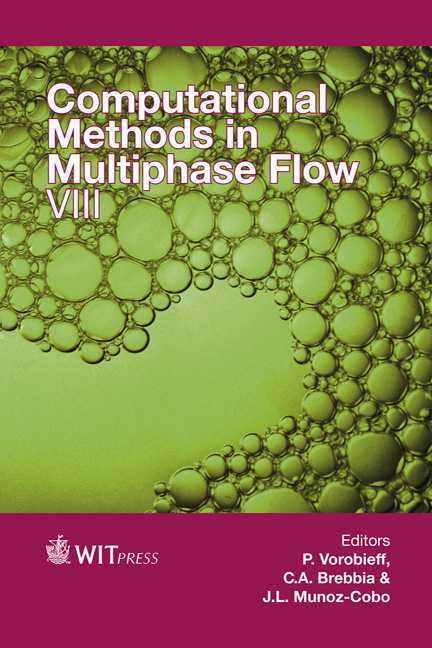Effects Of Inclination Angle On A Shock-accelerated Heavy Gas Column
Price
Free (open access)
Transaction
Volume
89
Pages
10
Page Range
171 - 180
Published
2015
Size
5,606 kb
Paper DOI
10.2495/MPF150151
Copyright
WIT Press
Author(s)
D. Olmstead, C. R. Truman, P. Wayne, P. Vorobieff
Abstract
When a shock encounters a multiphase interface at an oblique angle, three-dimensional (3D) flow effects are produced. Experiments using advanced optical diagnostics seek to elucidate the 3D nature of the flow as it transitions to turbulence. Planar laser-induced fluorescence (PLIF) images capture the development of flow instabilities in a shock-accelerated heavy gas column. Early time images show the counter-rotating vortex pair (CRVP) associated with the Richtmyer-Meshkov instability (RMI) both for normal planar and for oblique shocks, with the cores of the vortex pair parallel to the axis of the original gas column. For the oblique case, a shear-driven Kelvin-Helmholtz instability (KHI) also develops along the axis of the column due to 3D vorticity deposition. The influence of inclination angle of the column with respect to the shock direction on this secondary instability and thus upon the fully 3D flow, is assessed. The 3D data collected in these experiments is essential to the validation of numerical codes predicting a range of problems from scramjets to supernovae.
Keywords





